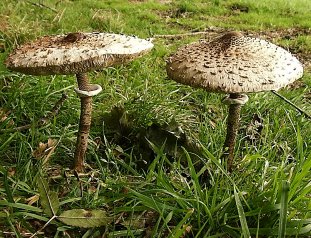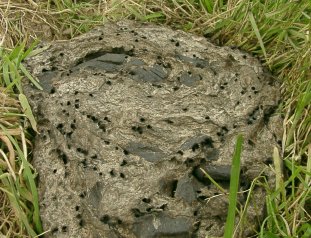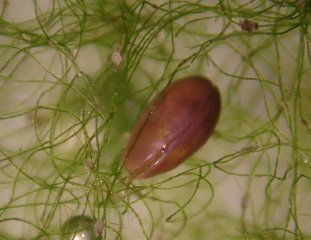 |
In addition to bacteria, the
soil contains many species of microfungi. One gram of soil may contain hundreds of metres
of fungal hyphae. However, larger fungi such as the Field Mushroom or the Shaggy Parasol (left) are
usually absent from the intensive grassland. This is because of factors such as high
nitrogen levels, together with the associated trampling, grazing and mechanical operations
of a modern grassland farm. |
 |
Grasslands provide some
excellent microhabitats. Cow-dung is colonised by a dazzling array of invertebrates, fungi
and bacteria. The humble cowpat will support about 450 species of invertebrate.
Colonisation starts as the dung exits the cow. Some species of fly lay their eggs in the
cowpat before it even hits the ground! Once on the ground, beetles zoom in, diving into
the soft dung before it hardens. Within this busy colony of animals, there are the
consumers of the dung, together with their predators. |
 |
Other microhabitats
associated with grasslands are easily overlooked. Fields which are grazed are usually
provided with cattle troughs. These mini ponds can support algae and feeding on this,
thousands of invertebrates such as ostracods can exist (left). The stagnant
conditions also favour midge and mosquito larvae. Inevitably, predators such as aquatic
beetles fly in and lay their eggs. They and their larvae will feed on the invertebrates in
the trough. |
|
Continue |